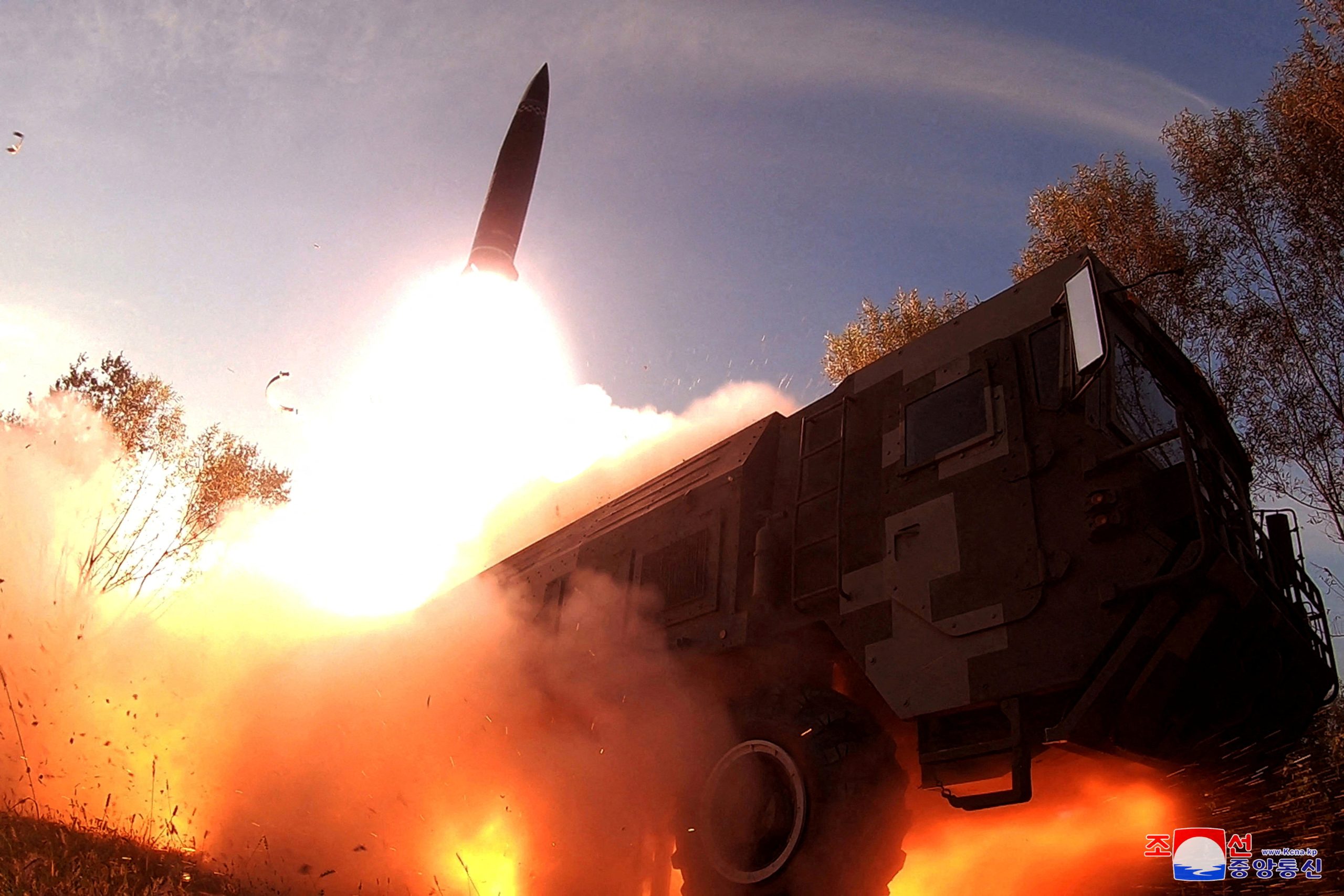
[elfsight_social_share_buttons id=”1″]
North Korea fired artillery shells off its east and west coasts on Tuesday, the South Korean military said.
The North fired some 100 shells into the sea off its west coast around 10 p.m. local time and shot a further 150 rounds off its east coast, the Joint Chiefs of Staff said in a statement on Wednesday.
North Korea’s latest military activity came after South Korean troops kicked off their annual Hoguk defense drills on Monday, designed to boost their ability to respond to North Korea’s nuclear and missile threats.
The drills, due to end on Saturday, are the latest in a series of military exercises by South Korea in recent weeks, including joint activities with the United States and Japan.
Growing tensions
FISM reported earlier this month that South Korea scrambled fighter jets after North Korean warplanes staged an apparent bombing drill, Seoul’s defense ministry said, as allied warships held missile defense drills and Pyongyang fired off the latest in a series of ballistic missiles.
The rare bombing drill by at least eight North Korean fighter jets and four bombers prompted the South to deploy 30 fighters. The warplanes swarmed each side of the heavily fortified border amid rising tensions over a string of missile tests by Pyongyang.
North Korea fired two short-range ballistic missiles into the sea on Thursday in the direction of Japan, just an hour after condemning the repositioning of a U.S. aircraft carrier to the region, and a U.N. Security Council meeting held in New York.
North Korea has launched about 40 missiles this year, including its largest intercontinental ballistic missiles (ICBMs), and appears ready to hold its first nuclear test since 2017, officials in Seoul and Washington have said.
Thursday’s launches followed the return of the carrier, USS Ronald Reagan, to waters off the Korean peninsula, and a U.N. Security Council meeting held in response to the North’s recent tests.
The missile launch was the sixth in 12 days and the first since North Korea fired an intermediate-range missile (IRBM) over Japan on Tuesday, which prompted joint South Korean and U.S. missile drills in which one weapon crashed and burned.
The launch was reported by South Korea‘s Joint Chiefs of Staff and the Japanese government.
“This is the sixth time in the short period, just counting the ones from the end of September,” Japanese Prime Minister Fumio Kishida told reporters. “This absolutely cannot be tolerated.”
The launch came after North Korea condemned the United States for talking to the United Nations Security Council about Pyongyang’s “just counteraction measures” on joint South Korea-U.S. drills, suggesting its missile tests are a reaction to the allied military moves.
In a statement, the reclusive nation’s foreign ministry also condemned Washington for repositioning the U.S. aircraft carrier off the Korean peninsula, saying it posed a serious threat to the stability of the situation.
The carrier and its strike group of accompanying warships were abruptly redeployed in response to North Korea‘s IRBM launch over Japan.
The carrier strike group joined destroyers from South Korea and Japan in maritime missile defense training, the South Korean military said on Thursday.
“This training focuses on mastering detection, tracking, and interception procedures through shared target information under a scenario of (North Korea) conducting ballistic missile provocations,” it said in a statement.
A State Department spokesperson said the United States condemned Thursday’s launch as a violation of the United Nations Security Council resolutions and a threat to regional neighbors and the international community.
The spokesperson, however, added that Washington was committed to a diplomatic approach and called on the North to engage in dialogue.
The United States accused China and Russia of enabling North Korean leader Kim Jong Un by blocking attempts to strengthen U.N. Security Council sanctions on Pyongyang for its nuclear weapons and ballistic missile programs.
Copyright 2022 Thomson/Reuters
